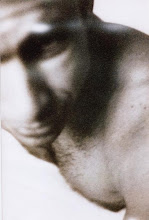Like it? This is what the cliffs and the ocean look like at Black's Beach, California. Christmas Eve 2010. See that steep canyon gouged into the cliff face? That's how I got to the beach, on a trail some call the Goat Trail.
I stood at the bottom of this thing and took a picture of where I had come down. Then I took a picture of La Jolla to the South. Then one of the nudie beach to the North. Then one of the waves and the low sun. Then I decided I was just going to cover the whole world around me, and figure out a way to stitch the pictures together.
Back home, I remembered I had used this took, Hugin, to create panoramic images a while back. It was a pain: you had to couple up the images and click on a series of points that matched up. Image 1, image 2, click, click, click, click, click... Then Hugin would figure out just exactly how badly you had screwed up your picture by tilting, turning, panning, etc. and would create a panorama. It took about four hours of tedious work.
I wasn't looking forward to that, so I looked on my computer (apt-cache search panorama) for alternatives. I downloaded all of them. There was a GIMP plugin called pandora that didn't seem to be doing much, but it complained initially about not having an application from hugin installed (I just had to restart GIMP to make it work). There was an "easy to use" application called fotoxx that seemed more primitive than easy to use. There was a CLI app called enblend. Other stuff seemed to be mostly supporting software.
I wept, I gnashed my teeth, and I started Hugin. Lo and behold! It started with a tabbed interface and (miracles!) a WIZARD!!! It promised it would ask you what it wanted, and started by asking about the pictures you wanted to use as a base. Then it started working, actually giving me feedback so that I didn't have to wonder whether it had died on me. Then it came out with a crude map of the panorama. Perfect! It had figured it all out on its own!
Next came a series of optimization steps, and that's where Hugin need to be a little more proactive. For instance, it won't tell you that it will adjust exposure, so you worry how weird things will look like with this particular section overexposed. It also shows you how it tilted and modified the original image to make it fit into the panorama - a real miracle.
Once I figured out the optimization step (about ten minutes), I saved the project for later re-use and exported the image. That was fun!
I should mention at this point that Hugin sensibly leaves parts of the image out that aren't included in the image components. That means that a section at the top and the bottom were missing and needed to be filled out. To get that done, I used the outstandingly marvelous "Smart Remove Selection" plugin for the GIMP.
Subscribe to:
Post Comments (Atom)


No comments:
Post a Comment